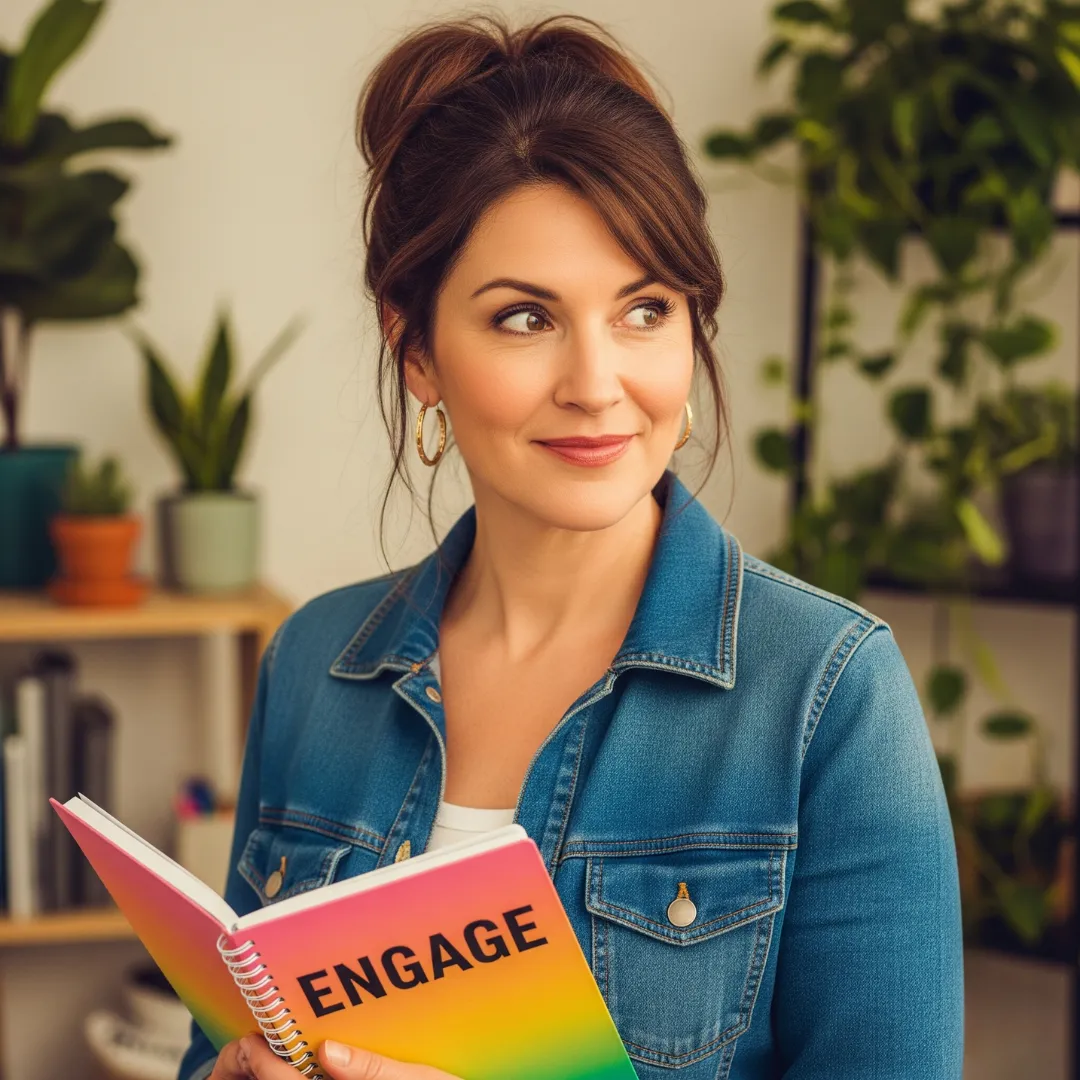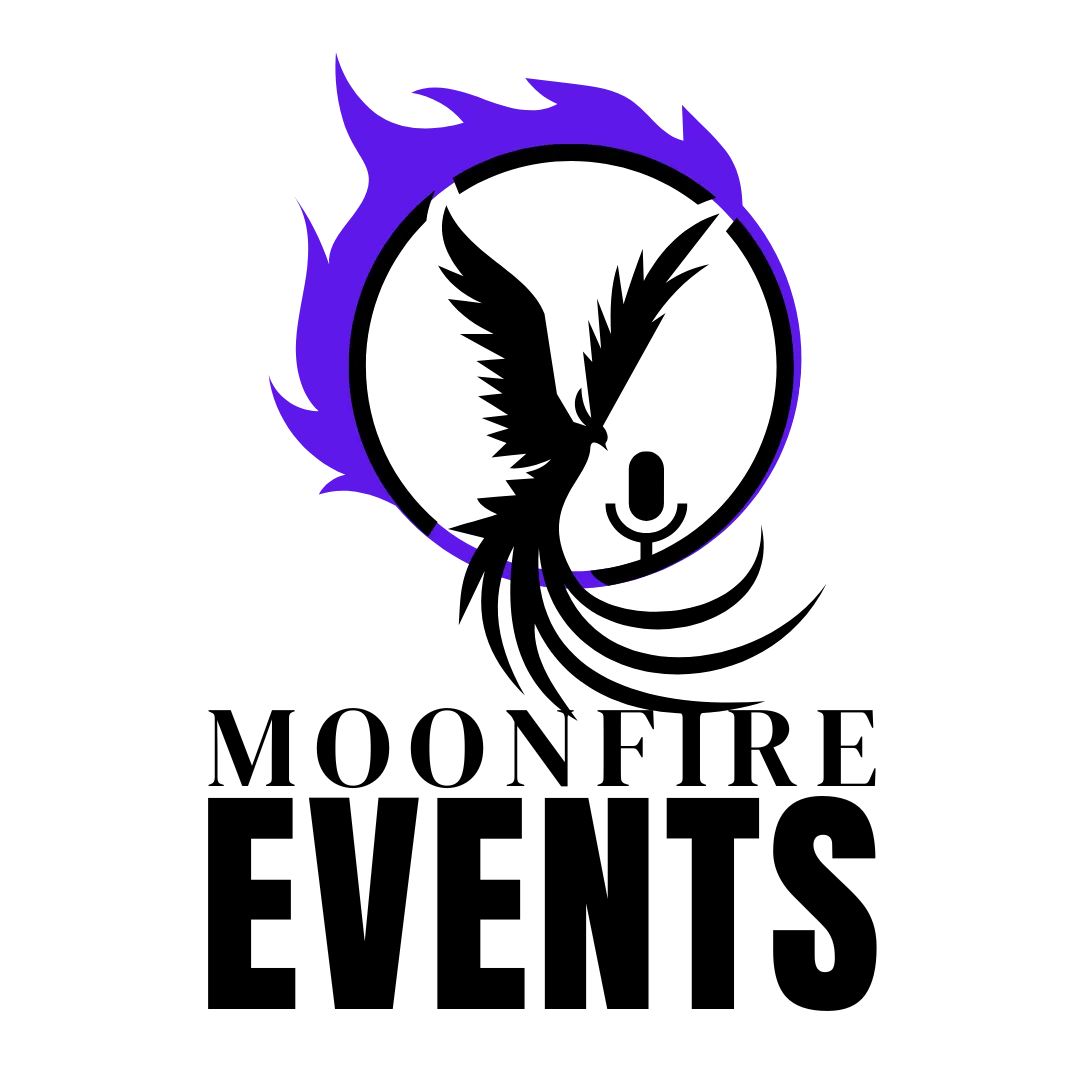MoonFire Chronicles
Your ultimate resource for mastering live virtual events. Dive into a treasure trove of tips, tricks, and tactics designed to empower entrepreneurs. Whether you're just starting or looking to elevate your game, these articles are to help guide you every step of the way. Join us on this journey and unlock the magic of unforgettable events!

Engage Your Audience (Without Draining Your ADHD Brain)
✨Let’s Set the Scene
You go live. You smile. You ask a question.
...Crickets.
Not a single emoji. Not a “yes” in the chat. Not even a pity thumbs-up.
You keep talking. Keep smiling. Keep pouring energy into the void… and by the end, you feel drained. Like you just threw a party that no one danced at.
If this sounds familiar - you’re not alone.
But imagine if you could create vibrant interactions without feeling utterly drained.
Here’s the truth: engagement doesn’t have to mean exhaustion.
And audience interaction isn’t something you need to force. It’s something you can invite - strategically, sustainably, and with zero clown energy required.
In this post, I’ll walk you through how to create meaningful engagement that doesn’t burn you out, overload your ADHD brain, or rely on awkward gimmicks.
Engagement ≠ Entertainment
Let’s get one thing straight: you’re not a game show host.
(Unless you want to be, in which case - carry on, sparkle queen ✨)
But for most entrepreneurs, especially those with ADHD or introvert energy, the idea of being “on” the whole time is... exhausting.
We’ve been told that interaction = high energy, dancing in your chair, trivia quizzes, and giving away gift cards every 15 minutes. That’s just not true.
Engagement is connection.
It’s trust.
It’s making people feel seen - even if they’re quiet.
🧠 Think of it this way: interaction isn’t about entertaining. It’s about inviting participation in small, safe, low-effort ways.
Why ADHD Entrepreneurs Struggle (and Excel!) at Engagement
Here’s the nuance:
ADHD brains often struggle with multitasking. Juggling content, timing, chat, and tech = overwhelm city.
But ADHD brains also thrive in real-time, spontaneous, emotionally rich environments.
In other words: if the structure works with your flow, you can become incredibly engaging - because your authentic enthusiasm and quick thinking become your superpowers, making your energy contagious..
✨ Soapbox moment: You don’t need to change your energy to fit the format. Change the format to support your energy.
Designing engagement that’s ADHD-friendly means:
Planning prompts in advance
Using tools that simplify, not complicate
Giving yourself built-in space to pause, breathe, and reset
Pre-Event Prep: Plant the Seeds of Engagement Early
One of the biggest mistakes I see? Waiting until during the event to think about engagement.
But the real magic starts before you go live.
Here’s how to warm your audience up in advance:
📧 In reminder emails: Add a teaser question like “What’s your biggest struggle with showing up online?”
🔔 On the registration page: Mention that it will be interactive - but casual and safe.
📱 On social: Share a poll or story question and promise you’ll reference responses during the event.
🎯 In the welcome slides or intro: Let people know exactly how to participate (emoji reactions, chat prompts, etc.)
When people know it’s safe, expected, and not overwhelming, they’re way more likely to respond.
Real-Time Tools That Don’t Drain You
You don’t need to juggle five tools and a virtual whiteboard to keep things lively.
Here are some low-lift, high-impact ways to spark connection without draining yourself:
💬 Chat Prompts
Keep them simple. “What’s your word of the day?” “Where are you tuning in from?” “Drop a 🔥 if this hit home.”
👐 Emoji Responses
Encourage low-effort signals: thumbs up, hearts, color-coded choices (“💛 or 💙 - which one feels more you today?”).
🎯 Name Shout-Outs
A quick 'I see you, Jess - love that!' goes a long way in making people feel part of the space. (Even if you can only grab a few names, it makes a big difference!)
🧘♀️ Built-In Pauses
Guide a 20-second breathing moment or stretch reset. It helps the audience and you regroup.
🧩 Optional: A Light Visual or Poll
Use Zoom’s built-in polling, or type out “Pick one: A, B, or C” in the chat. Don’t overcomplicate it - just keep them gently engaged.
🧠 Pro Tip: If possible, work from a printed chat guide so your ADHD brain doesn’t have to invent prompts on the fly.
Post-Event Connection Is Still Engagement (And It’s Easier!)
Here’s something most people forget: not everyone engages live.
Some people need to absorb before they respond. Others are silently nodding the whole time but don’t want to type. And that’s okay.
✨ Engagement doesn’t end when the call ends.
Here’s how to keep it going without doing more work:
📩 Send a follow-up email with 1 simple reflection question
💬 Invite replies (e.g., “Hit reply and tell me your biggest insight - I actually read them!”)
🧵 Post-event polls or Q&A on social stories
🗨️ DM invitation (“Did something stick with you? My inbox is open!”)
Bonus: you get better feedback, deeper connections, and often, new client convos that feel organic.
✨ A Quick Story From Me…
There was one event early on where the chat stayed totally silent. I panicked a little - was I boring? Were they even there?
I pushed through, kept going, and focused on how I was showing up instead of what I was getting back. After the event, three people DM’d me saying:
“I was so into it I didn’t want to open the chat box. But I took a full page of notes.”
That moment changed everything.
Sometimes the connection is quieter than we expect. But it’s still happening.
We just have to trust it.
🎯 What to Remember Before You Log Off
You don’t need to juggle 10 apps. You don’t need to host a quiz.
You definitely don’t need to be exhausted trying to get a reaction.
✨ Engagement is an invitation. Not a performance.
Show up. Ask simply. Respond when they respond.
And remember: even when it’s quiet… someone is listening.
➡️ Want more strategies that help you run repeatable, ADHD-friendly events that actually feel good to host?
Follow me on LinkedIn and let’s make your virtual stage feel like home.
© 2025 MoonFire Events | Forge connections. Fuel growth. Own your stage.
Follow: LinkedIn | Instagram | YouTube | TikTok | Facebook

